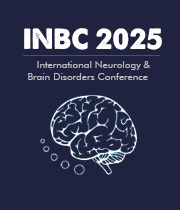Title : A prospective evaluation of hemokine receptor-4 (CXCR4) overexpression in high-grade glioma using 68Ga-Pentixafor (Pars-Cixafor™) PET/CT imaging
Abstract:
Background: While magnetic resonance imaging (MRI) remains the gold standard for morphological imaging, its ability to differentiate between tumor tissue and treatment-induced changes on the cellular level is insufficient. Notably, glioma cells, particularly glioblastoma multiforme (GBM), demonstrate overexpression of chemokine receptor-4 (CXCR4). This study aims to evaluate the feasibility of non-invasive 68Ga-Cixafor™ PET/CT as a tool to improve diagnostic accuracy in patients with high-grade glioma.
Methods: In this retrospective analysis, a database of histopathology-confirmed glioma patients with MRI findings consistent with high-grade gliomas was utilized. Within 2 weeks of their MRI, these patients underwent 68Ga-Cixafor™ PET/CT scans to assess CXCR4 expression. Both visual scoring based on established criteria and semi-quantitative measures including maximum standardized uptake value (SUVmax) and tumor-to-background ratios (TBR) were calculated to analyze the PET/CT data.
Results: Our retrospective study enrolled 29 histologically confirmed glioma patients with MRI findings consistent with high-grade gliomas. All patients underwent 68Ga-Cixafor™ PET/CT scans within 2 weeks of their MRI, specifically at one-hour post-injection time point. Visual assessment based on a standardized scoring system identified 27 positive scans out of 29 (93.1%). Median SUVmax was 2.31 (range: 0.49–9.96) and median TBR was 20 (range: 6.12–124.5). Pathological analysis revealed 5 grade III (17.24%) and 24 grade IV (82.75%) lesions among the 29 patients. Notably, the median SUVmax of grade IV lesions (2.85) was significantly higher than grade III lesions (1.27) (P = 0.02). Conversely, there was no significant difference in median TBR between grade IV (20) and grade III (22.37). These findings support the correlation between high CXCR4 expression, particularly in high-grade gliomas, and elevated uptake of 68Ga-Pentixafor. While areas with high uptake showed CXCR4 expression, areas with low uptake did not exhibit noticeable expression (data not shown).
Conclusion: This study demonstrated that 68Ga-Cixafor™ PET exhibits a TBR with minimal cortical uptake, significantly enhancing glioma detection compared to conventional imaging methods. This, combined with the potential therapeutic capabilities of CXCR4-targeting radiopharmaceuticals, highlights the promise of 68Ga-Cixafor™ as a valuable tool for not only improved glioma diagnosis but also personalized treatment strategies.
Key Words: CXCR4; 68Ga-Pentixafor; PET/CT; MRI; GBM



